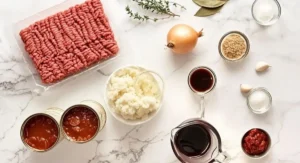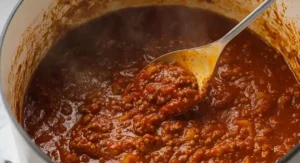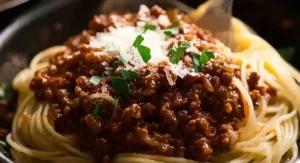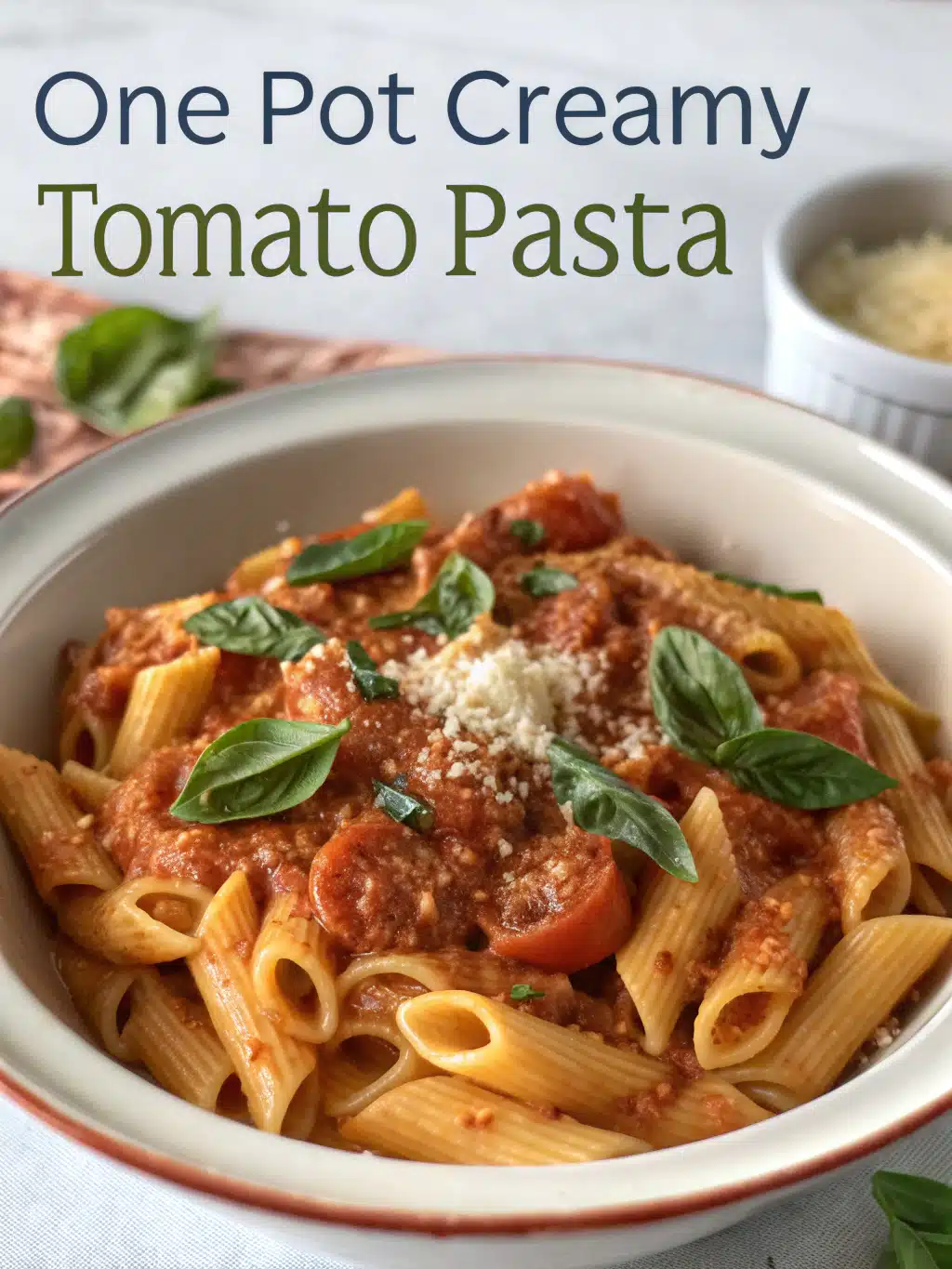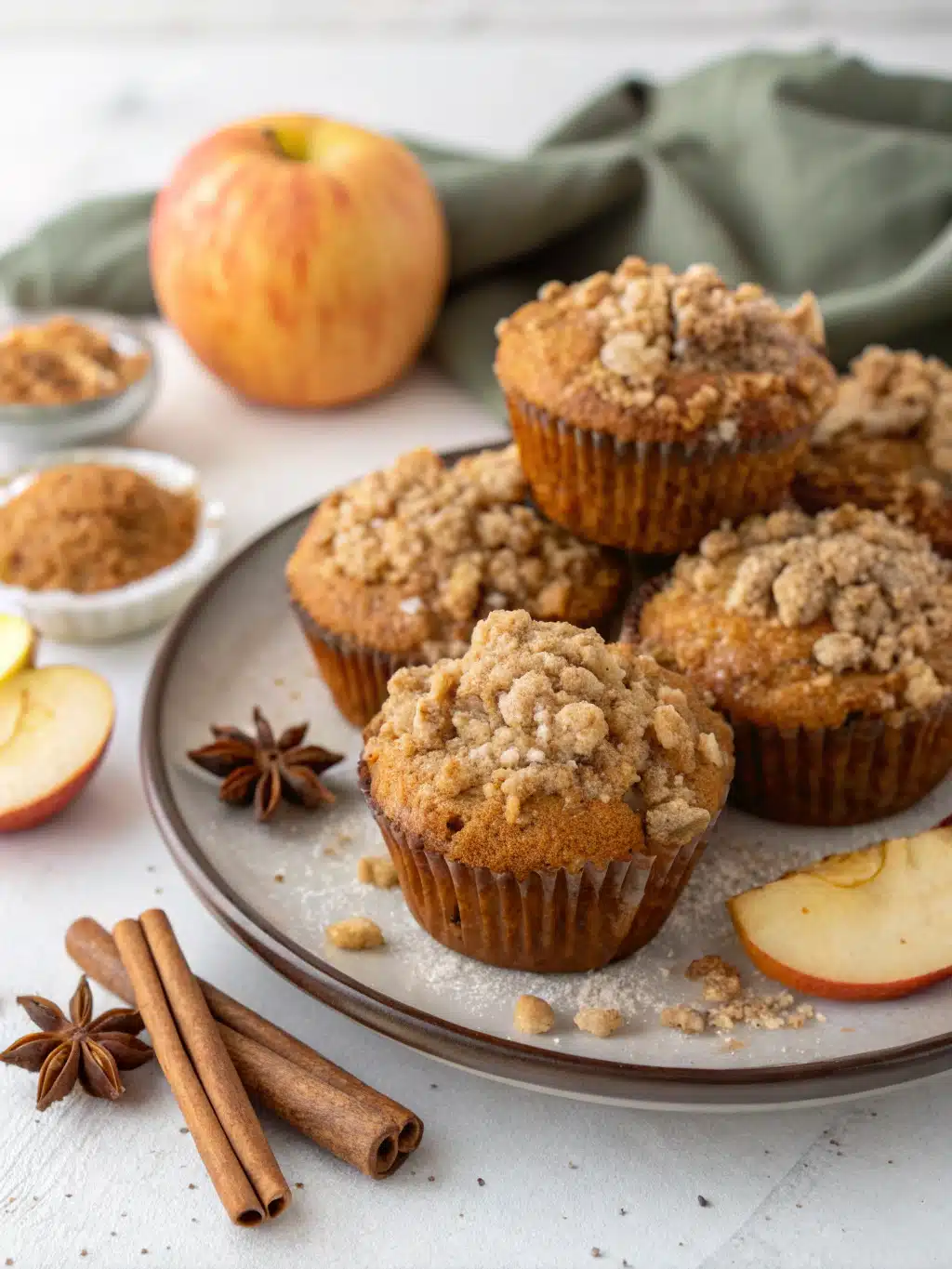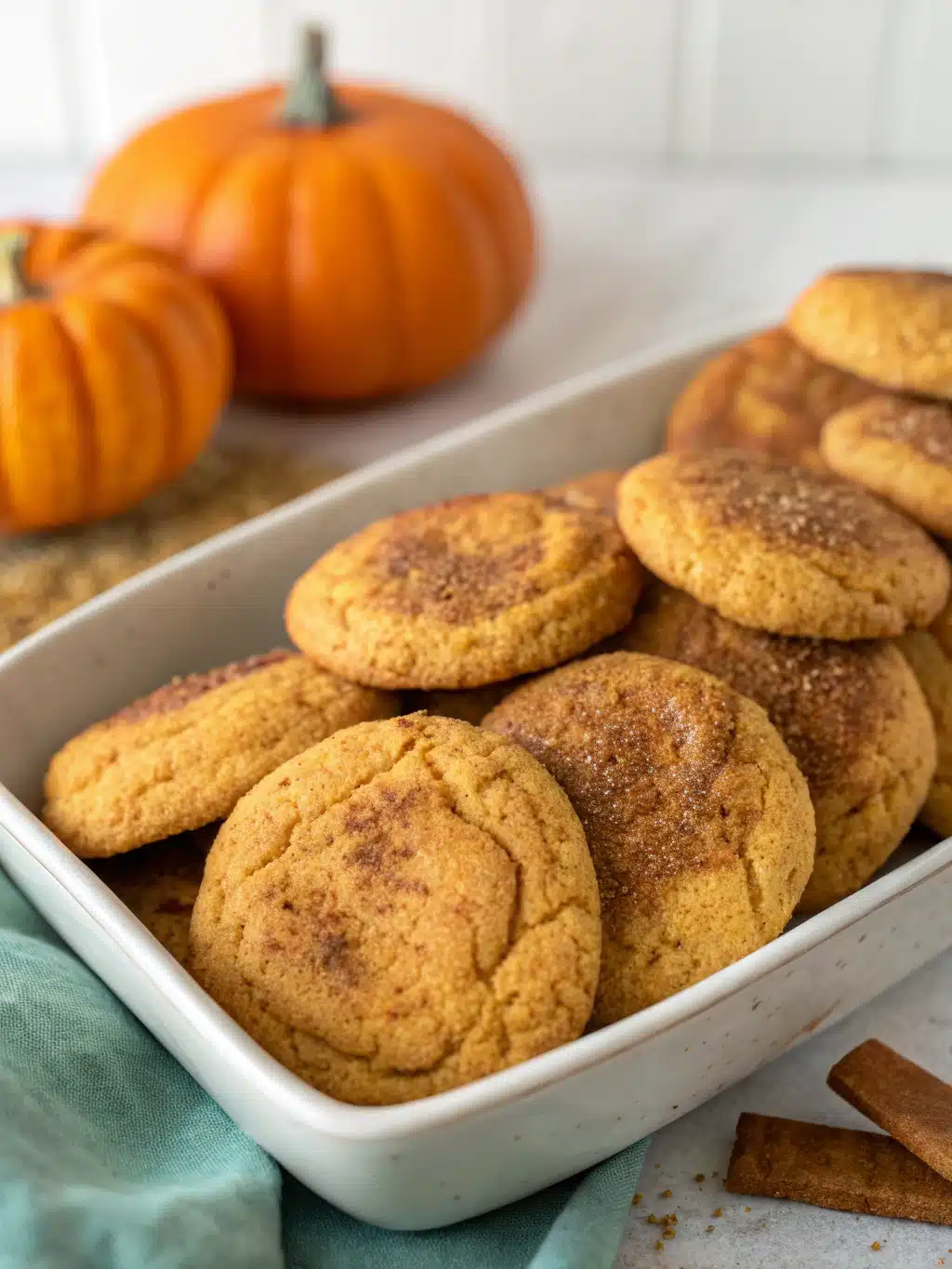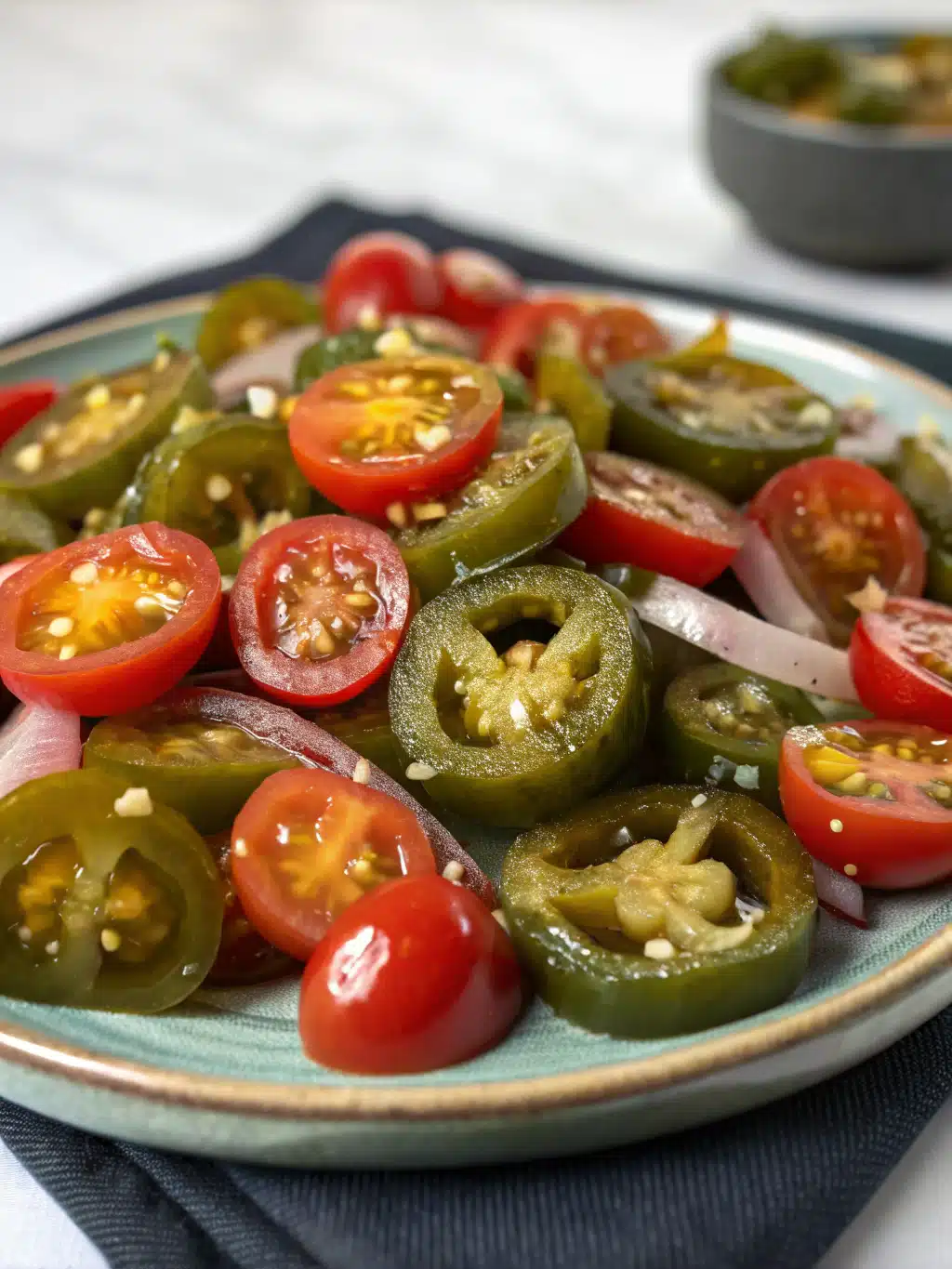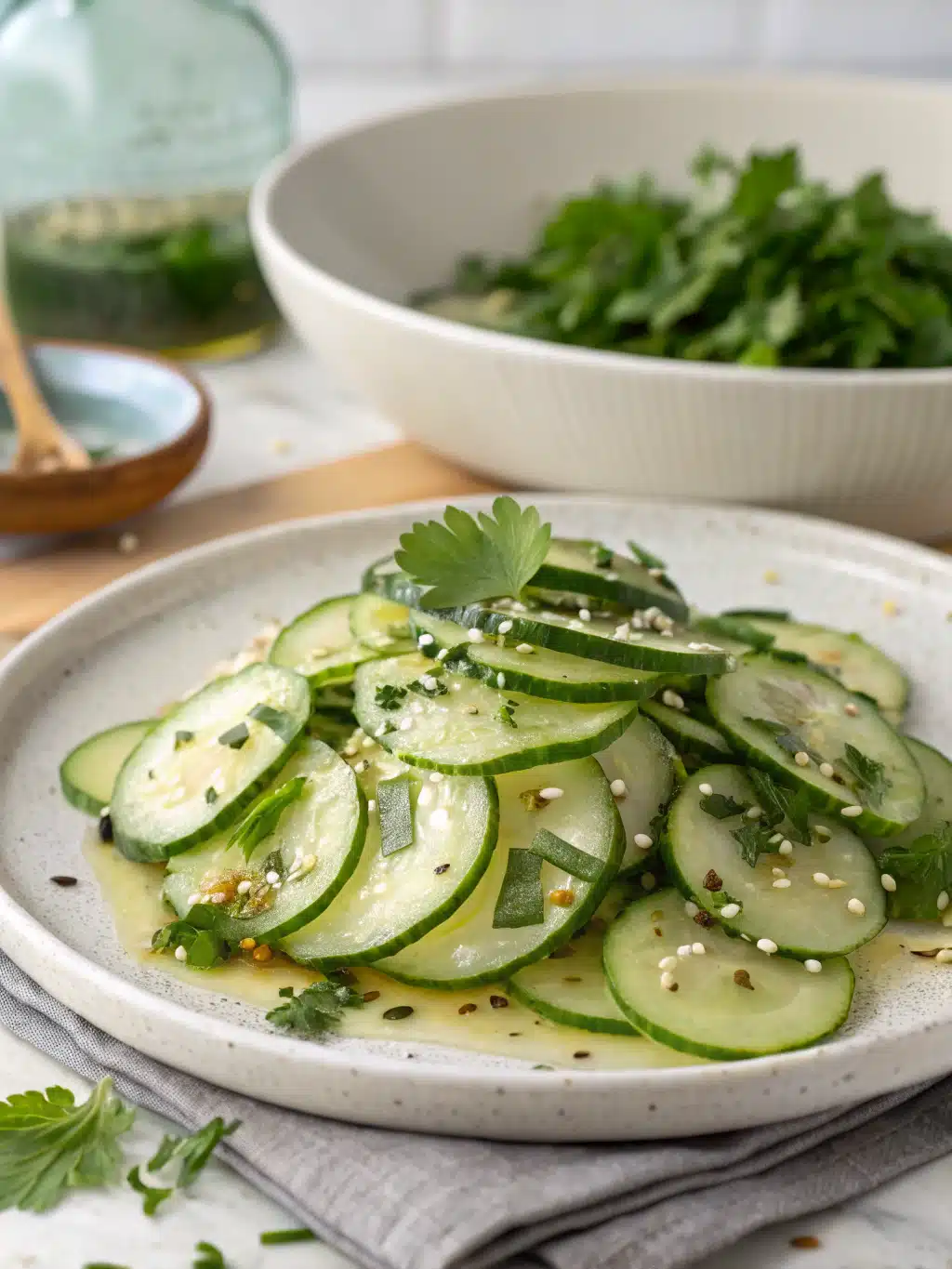Estimated reading time: 10 minutes
Few dishes are as universally loved as a hearty plate of Spaghetti Bolognese. This classic comfort food brings together rich meat sauce, perfectly cooked pasta, and a sprinkle of Parmesan for a meal that feels like a warm hug. Whether you’re looking for a simple family dinner or aiming to impress guests, mastering the perfect Spaghetti Bolognese recipe is essential.
In this guide, we’ll dive into everything you need to know—from the origins of Bolognese sauce to expert tips and fun variations. Let’s create your best plate of spaghetti yet!
Table of contents
Why This Spaghetti Bolognese Recipe Works
There are countless versions of Spaghetti Bolognese, but what makes this one the ultimate?
- Simple Ingredients: Nothing fancy, just everyday items you likely already have.
- Rich Flavor: Slow-simmered for depth and richness.
- Customizable: Adaptable to gluten-free, dairy-free, or vegetarian diets.
- Family-Friendly: Loved by both kids and adults.
- Freezer-Friendly: Perfect for meal-prepping or freezing for busy-nights.
Whether you’re making a quick spaghetti Bolognese or going all-out for a traditional Bolognese, this recipe will-become your go-to.
Building the Backbone of Flavor: A Deep Dive into Ingredients
The magic of bolognese lies in the synergy of its components, slowly transforming into a rich, complex sauce. Let’s explore the essential-building blocks:
- The Meat: For the best flavor and texture, use a mix of ground beef and pork (or veal). Aim for an 80/20 or 85/15 lean-to-fat ratio. Adding finely diced pancetta enhances the savory depth.
- The Soffritto (The Holy Trinity): This aromatic base of finely diced onion, carrot, and celery is non-negotiable. These vegetables are cooked slowly in fat until they soften and release their natural-sweetness, creating a fundamental layer of flavor before the meat or tomatoes are added. The fine dice ensures they melt into the sauce as it simmers.
- The Fat: Olive oil and butter are often used together. Olive oil provides a baseline, while butter adds richness and helps in the browning process. Fat is essential for-sautéing the soffritto and browning the meat, rendering-down and infusing the sauce with flavor.
- The Liquids:
- Milk: A traditional addition in many ragu recipes. Whole milk is preferred. It helps tenderize the meat over the long cooking time and mellows the acidity of the tomatoes, resulting in a smoother, more harmonious sauce. Don’t skip this if you want that authentic texture and flavor profile.
- Stock/Broth: Beef, chicken, or vegetable broth adds liquid for simmering and contributes another layer of savory depth. It helps prevent the sauce from becoming-too thick too quickly.
- The Tomatoes: While some traditional ragu recipes use minimal tomato, the global spaghetti bolognese often embraces it more fully.
- Crushed Tomatoes: Provide body and a balance of sweetness and acidity.
- Passata (Tomato Puree): Offers a smooth texture and intense tomato flavor.
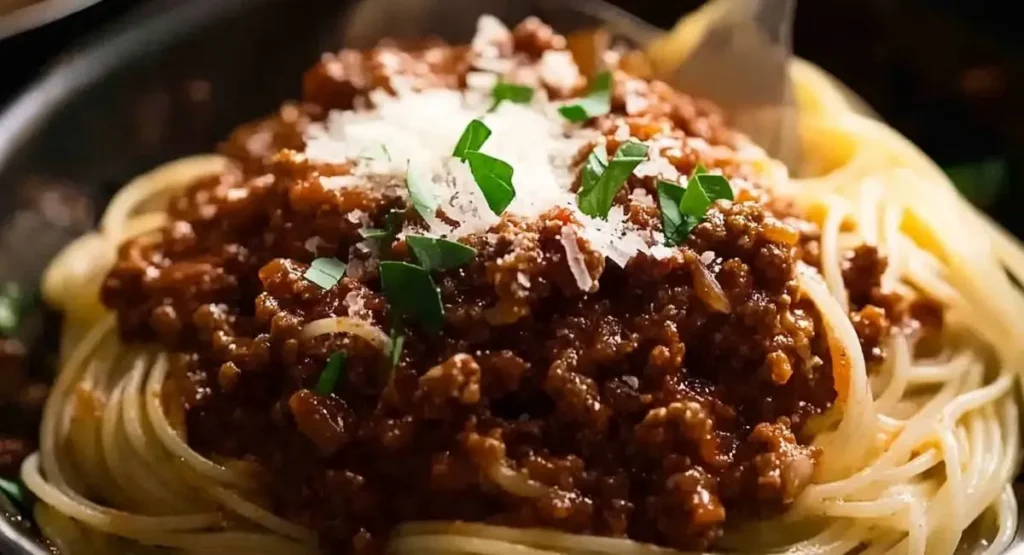
The Art of the Simmer: Techniques for an Exceptional Bolognese
Making bolognese is a labor of love, and the techniques employed are just as important as the ingredients.
- The Finely Diced Soffritto: Take your time dicing the onion, carrot, and celery finely and as evenly as possible. Small pieces will cook down and meld into the sauce, becoming almost indistinguishable.
- Slow Sautéing the Soffritto: Cook the vegetables over medium-low heat with the fat until they are truly softened and translucent, not just browned. This process, called “sweating,” is vital for extracting their sweetness and building the flavor base. Patience here pays dividends.
- Proper Meat Browning (The Maillard Reaction): Brown the meat in batches if necessary to avoid-overcrowding the pot. Overcrowding steams the meat instead of browning it, resulting in less flavor development. Browned bits-stuck to the bottom of the pan (“fond”) are packed with flavor.
- Deglazing with Wine (or Broth): After browning the meat, pour in the wine (or broth) and use a wooden spoon to scrape up all the browned-bits from the bottom of the pot. This process, deglazing, incorporates that valuable flavor (“fond”) back into the sauce. Allow the alcohol to simmer and reduce slightly.
- Adding the Tomato Paste: Stir in the tomato-paste and cook it for a minute or two after the deglazing liquid has reduced. This helps to caramelize it slightly and remove any raw metallic taste, deepening its flavor.
- Seasoning Strategy: Taste the sauce periodically as it simmers. Salt helps draw out flavors, but too much too early can make the sauce overly salty as it reduces. Add salt gradually, especially towards the end of the simmering time. Freshly ground black pepper adds a pungent counterpoint.
- Finishing the Sauce (Optional): Some recipes add a touch more milk or cream at the very end for extra richness.
Ingredients You’ll Need
Before you get started, gather these staples:
For the Bolognese Sauce:
- 2 tbsp olive oil
- 1 large onion, finely chopped
- 2 garlic cloves, minced
- 2 carrots, grated
- 2 celery stalks, diced
- 500g ground-beef (or a mix of beef)
- 2 tbsp tomato paste
- 400g canned crushed tomatoes
- 1 cup beef broth
- 1 tsp dried oregano
- 1 tsp dried basil
- ½ cup red wine (optional but recommended for richness)
- 1 tsp sugar (to balance acidity)
- Salt and pepper to taste
For the Pasta:
- 400g spaghetti (regular, gluten-free, or low-carb as needed)
- Water and salt for boiling
Toppings:
- Freshly grated Parmesan cheese
- Fresh basil or parsley for garnish
- Optional: Add mushrooms for extra umami flavor or use turkey for a leaner-version.
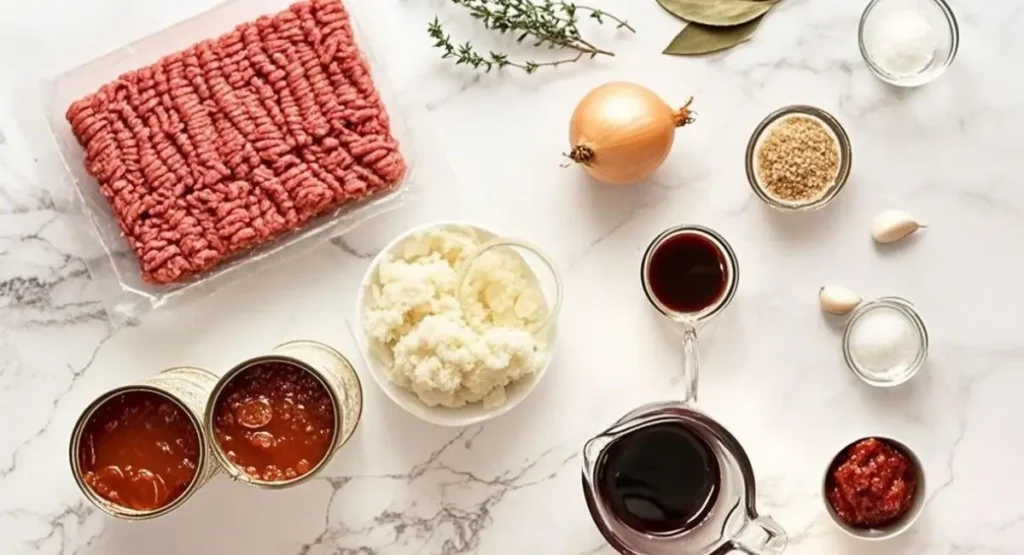
Step-by-Step Cooking Instructions
Total Time: 1 hour
u003cstrongu003ePrepare the Aromaticsu003c/strongu003e
In a large-skillet or Dutch oven, heat the olive-oil over medium heat. Add the chopped-onion, garlic, carrot, and celery. Sauté for about 5 to 7 minutes, stirring-occasionally, until the vegetables are soft and fragrant.
u003cstrongu003eBrown the Meatu003c/strongu003e
Increase the heat to medium-high and add the ground-beef. Cook-until browned, breaking up large clumps with a spoon. Drain excess fat if necessary.
u003cstrongu003eAdd Tomato Paste and Wineu003c/strongu003e
Stir in the tomato-paste and cook for 1–2 minutes to deepen the flavor. Pour in the red wine and let it simmer for 2–3 minutes until slightly reduced.
u003cstrongu003eSimmer the Sauceu003c/strongu003e
Add the crushed tomatoes, beef broth, oregano, basil, sugar, salt, and pepper. Stir well. Lower the heat to a gentle-simmer and let it cook-uncovered for 30–40 minutes, stirring occasionally.
u003cstrongu003eCook the Spaghettiu003c/strongu003e
Meanwhile, bring a large-pot of salted water to a boil. Cook the spaghetti-according to package instructions until al dente. Drain and reserve some pasta water.
u003cstrongu003eAssemble and Serveu003c/strongu003e
Toss the spaghetti with the sauce, adding reserved pasta water if needed for a silky texture. Serve hot, topped with Parmesan-cheese and fresh basil.
Troubleshooting Common Spaghetti Bolognese Problems
Even experienced cooks can encounter issues. Here’s how to fix common bolognese woes:
- Sauce is too thin: Remove the lid and continue to simmer, allowing more liquid to evaporate. You can also mix a tea-spoon of cornstarch with a tablespoon of cold water, stir into the simmering-sauce, and cook for a few minutes until thickened.
- Sauce is too thick: Stir in more beef broth or some of the reserved pasta cooking water until it reaches your desired consistency.
- Meat isn’t tender: This usually means it hasn’t simmered long enough, or you used very lean meat with no fat. A longer, slower simmer is the solution.
- Sauce tastes too acidic (from tomatoes): A pinch of sugar can help balance acidity. Also, ensure you’ve simmered the sauce long enough, as slow cooking naturally mellows the tomato’s acidity. Adding milk or a touch of cream can also help.
- Sauce lacks flavor: Ensure you salted sufficiently throughout the cooking process. Check if the soffritto was cooked long enough. Did you brown the meat properly? Did you simmer for a sufficient time? Quality of ingredients matters; ensure fresh vegetables and good quality meat/pancetta.
Beyond Spaghetti: Creative Ways to Use Bolognese Sauce
While spaghetti bolognese is a classic, this versatile sauce can be used in numerous other delicious ways:
- Lasagna: Layer the bolognese sauce with pasta sheets, béchamel sauce, and cheese for a classic lasagna.
- Baked Ziti or Penne: Toss cooked ziti or penne with bolognese sauce, top with mozzarella and Parmesan, and bake until bubbly and golden.
- Stuffed Vegetables: Hollow out bell peppers, zucchini, or eggplant halves, fill with bolognese sauce, top with cheese, and bake.
- Bolognese Pies: Use the sauce as a filling for individual savory pies with a pastry crust.
- Bolognese Poutine: A hearty twist on the Canadian classic, spoon hot bolognese over French fries and cheese curds.
- On Toast or Polenta: A simpler presentation, perfect for using up leftovers.
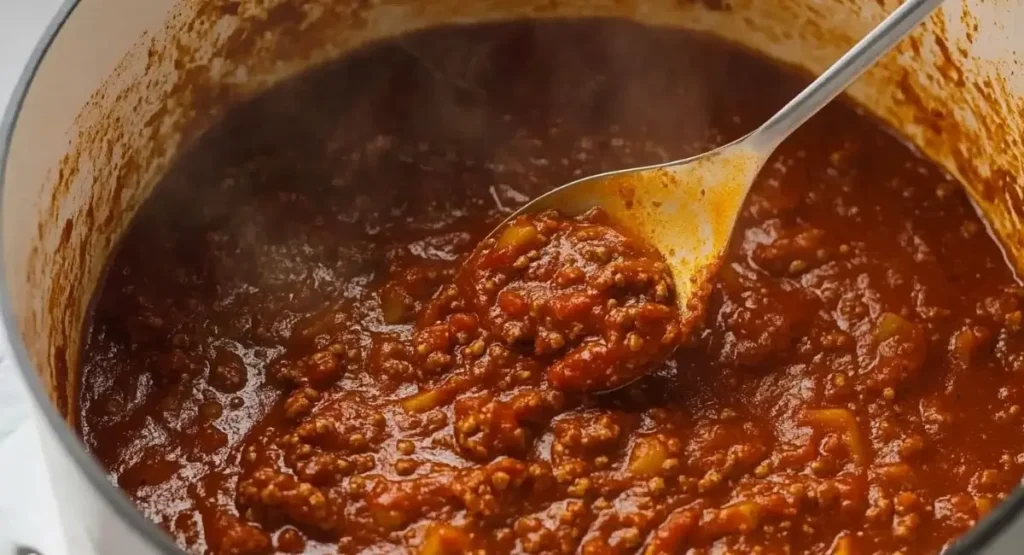
Exploring Variations:
- Slow Cooker Bolognese: Brown meat and soffritto, then transfer to a slow-cooker with remaining ingredients. Cook on low for 6-8 hours or high for 3-4 hours.
- Instant Pot Bolognese: Brown meat and soffritto using the sauté function, add other ingredients, then pressure cook according to Instant Pot bolognese recipes (usually around 20-30 mins with natural release).
- Vegetarian/Vegan Bolognese: Substitute meat with brown lentils, finely chopped mushrooms, walnuts, or plant-based mince. Use vegetable broth and omit dairy.
- Spicy Bolognese: Add red pepper flakes or a pinch of cayenne pepper when adding the garlic.
- Adding More Vegetables: Feel free to add finely diced mushrooms, bell peppers, or even zucchini to the soffritto for extra flavor and nutrients.
Storing and Reheating Bolognese
Bolognese sauce is excellent for meal prep.
- Refrigeration: Store leftover-sauce in an airtight container in the refrigerator for up to 3-4 days.
- Freezing: Bolognese freezes beautifully. Let it cool-completely, then transfer to freezer-safe containers or bags. It can be frozen for up to 3-4 months. Thaw overnight in the refrigerator or gently-reheat from frozen on the stovetop or microwave.
Serving Suggestions
Serve your hot spaghetti bolognese immediately after tossing the pasta with the sauce. A generous topping of freshly grated Parmigiano-Reggiano cheese is essential. A simple side salad with a vinaigrette and some crusty bread for soaking up the extra-sauce complete the meal. For a wine-pairing, a medium-bodied Italian red like Chianti Classico, Sangiovese, or even a Valpolicella complements the richness of the sauce.
Conclusion: The Reward of Patience
Making spaghetti bolognese, especially a rich, slow-simmered version, is an exercise in patience. But the rewards are immense. The depth of flavor that develops over hours on the stove simply cannot be replicated by rushing the process. By understanding the role of each-ingredient, mastering key techniques like the soffritto and the long simmer, and not being afraid to troubleshoot or experiment, you can create a spaghetti bolognese that is truly your own masterpiece.
Get ready to cook! Make some time in your day, get your ingredients, and start making this favorite dish. The smell, the taste, and the happiness it brings are worth the effort. Have fun while cooking, and remember to enjoy sharing your delicious spaghetti bolognese with your family and friends.
Frequently Asked Questions
u003cstrongu003eIs Spaghetti Bolognese Authentic Italian?u003c/strongu003e
The traditional Italian version, known as u0022Ragù alla Bolognese,u0022 is thicker and served with tagliatelle, not spaghetti. However, u003cstrongu003eSpaghetti Bologneseu003c/strongu003e has become an international comfort food favorite.
u003cstrongu003eCan I freeze Bolognese sauce?u003c/strongu003e
Sure! Allow to cool completely, then portion into containers suitable for freezing, and freeze for up to three months. Thaw overnight in the refrigerator before reheating.
u003cstrongu003eWhat’s the best pasta for Bolognese?u003c/strongu003e
While spaghetti is classic internationally, Italians often prefer wider noodles like tagliatelle that better hold the rich sauce.
u003cstrongu003eCan I make it without wine?u003c/strongu003e
Yes, just use extra beef broth or a splash of balsamic vinegar for richness without the alcohol.
u003cstrongu003eHow do I reheat leftover Bolognese?u003c/strongu003e
Gently reheat over low heat, Add a small amount of water or broth if the mixture becomes too thick.
Related Recipes You Might Enjoy
Did You Make This Recipe!
There are no reviews yet. Be the first one to write one.
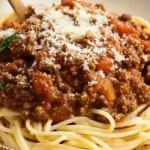
Spaghetti Bolognese Recipe
- Total Time: 1 hour
- Yield: 4 people
Description
Learn how to make a rich and hearty spaghetti Bolognese with simple ingredients. Perfect for family dinners, meal prepping, or cozy Italian nights!
Ingredients
For the Bolognese Sauce:
- 2 tbsp olive oil
- 1 large onion (finely chopped)
- 2 garlic cloves (minced)
- 2 carrots (grated)
- 2 celery stalks (diced)
- 500 g ground beef (or beef and pork mix)
- 2 tbsp tomato paste
- 400 g canned crushed tomatoes
- 1 cup beef broth
- 1 tsp dried oregano
- 1 tsp dried basil
- ½ cup red wine (optional)
- 1 tsp sugar
- Salt and pepper to taste
For the Pasta:
- 400 g spaghetti
- Water and salt for boiling
Toppings:
- Grated Parmesan cheese
- Fresh basil or parsley
Instructions
- Prepare the Aromatics:
- Heat olive oil in a large skillet or Dutch oven. Add onion, garlic, carrots, and celery. Cook 5–7 minutes until soft.

- Brown the Meat:
- Add ground beef. Cook until browned, breaking it up with a spoon. Drain excess fat if needed.
- Add Tomato Paste and Wine:

- Stir in tomato paste. Add wine and simmer for 2–3 minutes until slightly reduced.
- Simmer the Sauce:
- Add crushed tomatoes, broth, oregano, basil, sugar, salt, and pepper. Simmer uncovered for 30–40 minutes.
- Cook the Pasta:

- Boil spaghetti in salted water according to package directions. Drain and reserve ½ cup pasta water.
- Assemble and Serve:
- Mix spaghetti with sauce, adding reserved pasta water if needed. Serve topped with Parmesan and fresh basil.
Notes
Vegetarian Option: Replace beef with lentils or plant-based ground meat.
No Wine: Use additional beef broth or 1 tbsp balsamic vinegar for richness.
Storage: Sauce can be frozen for up to 3 months.
- Prep Time: 15 minutes
- Cook Time: 45 minutes
- Category: Main Course
- Cuisine: Italian


